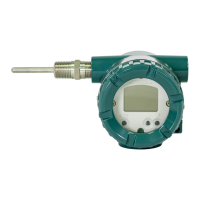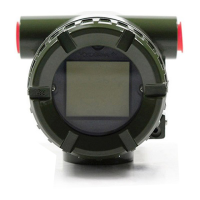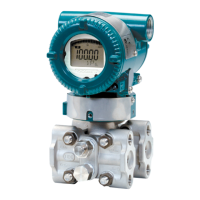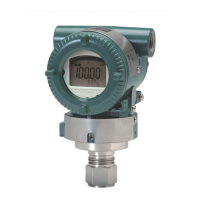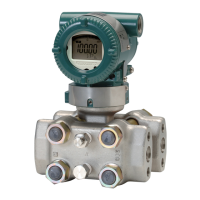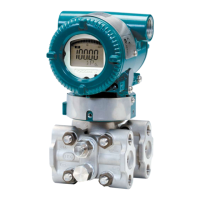IM 12B6C3-E-E
Maintenance 7-1
7. MAINTENANCE
7-1. Periodic maintenance for the EXA transmitter
The transmitter requires very little periodic maintenance. The housing is sealed to IP65 (NEMA 4X)
standards, and remains closed in normal operation. Users are required only to make sure the front window
is kept clean in order to permit a clear view of the display and allow proper operation of the pushbuttons.
If the window becomes soiled, clean it using a soft damp cloth or soft tissue. To deal with more stubborn
stains, a neutral detergent may be used.
NOTE:
Never used harsh chemicals or solvents. In the event that the window becomes heavily stained or
scratched, refer to the parts list (Chapter 9) for replacement part numbers.
When you must open the front cover and/or glands, make sure that the seals are clean and correctly fitted
when the unit is reassembled in order to maintain the housing’s weatherproof integrity against water and
water vapor. The pH measurement uses high impedance sensors and may otherwise be prone to problems
caused by exposure of the circuitry to condensation.
The EXA analyzer contains a logbook feature which needs a clock to provide the timings. The EXA
instrument contains a lithium cell (battery) to support the clock function when the power is switched off. This
cell needs to be replaced at 5 yearly intervals (or when discharged). Contact your nearest Yokogawa service
centre for spare parts and instructions.
7-2. Periodic maintenance for the sensor system
NOTE:
Maintenance advice listed here is intentionally general in nature. Sensor maintenance is highly application
specific.
The sensor system must be kept clean to function well. This may require regular cleaning of the electrodes.
(The effect of dirty electrodes will be to slow the system response and perhaps corrupt the measuring loop
entirely). The frequency of cleaning and the method of cleaning will depend entirely on the process.
Where a refillable (flowing electrolyte) reference system is employed, make sure that the reservoir is kept
topped up. The rate of electrolyte consumption will again be process dependent, so experience will show
how often you must refill.
The periodic recalibration of the sensor system is necessary to ensure best accuracy. This takes into
account the aging of the sensors, and the nonrecoverable changes that take place. These processes are
slow, however. If frequent recalibration is needed, it is usually because the cleaning process is not effective,
the calibration is not well executed or the pH readings are temperature dependent. Monthly calibrations
should be sufficient for most applications.
If a film remains on the pH sensor after cleaning, or if the reference junction is partly plugged, then
measuring errors can be interpreted as a need for recalibration. Because these changes are reversible with
correct cleaning and/or proper selection or adjustment of the electrolyte flow through the junction, make
sure that these items are correct before recalibrating the system.
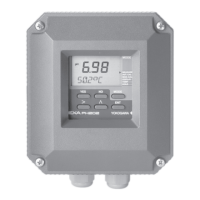
